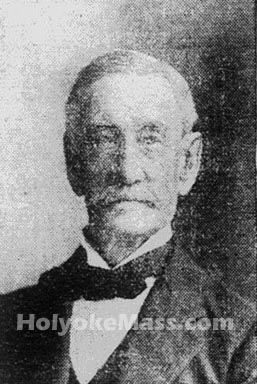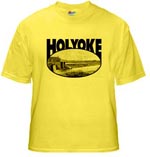by Laurel | March 4th, 2013
31 May 1903
Part I
Holyoke Man’s Large Charity, Many People Aided by It
A Fortune Accumulated by a Sagacious Yankee, Now a Fund for the Needy — Careful Management by the Trustees
The old highway that runs straight from the Northampton town line through Holyoke to the West Springfield town line has seen many famous men and women go out from the homesteads that border it; but perhaps none of these is more widely known than Whiting Street, who, through the charities that bear his name — the Whiting Street fund, as it appears in the records of town and city up and down the valley — has left an undying memorial to his name and an influence toward help in times of trouble that have proved the saying of many poor people in desperate straits, yet unwilling to pauperize themselves by appealing to the civic authorities for aid. Along this old street were the beginnings of Holyoke; later to be consigned to a mere suburb while the heart of business was transferred to “down town.” Whiting Street’s home was on the Northampton side of the line, but his business and his main interests were in the city of Holyoke, so that city looks on him, rather than Northampton, as one of her sons. One of Holyoke’s finest blocks on Main street, the Whiting Street building, perpetuates his name in brick and stone; but by his legacy to the worthy poor in cities and towns his name will be better known and longer cherished.
In all the 22 towns and cities that are benefited by the Whiting Street fund, there are probably very few people who are familiar with the provisions of the will or the conditions under which the worthy poor receive aid. Many will here learn for the first time that the original legacy for this purpose amounted to $112,000, which has been increased to $170,000 though wise management on the part of the trustees. Briefly, the sums set apart — from $25,000 each to the cities of Holyoke and Northampton to a few hundred dollars to small towns — are not given outright, but are kept together in a fund until the death of the heirs of Whiting Street and managed by the trustees, who have charge of the balance of the large estate, now valued at over a million and a half of dollar. After the death of the Whiting Street heirs, the cities and towns are to take charge of the fund, but not to use the principal, the income along being at their service. So that for all time to come in large sums and in little the self-supporting poor will be helped; for it is to such that the income is solely to be applied, not to paupers.
Whiting Street has now been dead 25 years, passing away one pleasant August morning in 1878, being in the 88th year of his age. All men who have known him and many are yet surviving who knew him personally, agree that he was a remarkable man; and the fact that unaided, in the days in which he lived, he was able to leave behind an estate of nearly half a million dollars, and philanthropic enough to leave a large share for charitable purposes, betokens a man of more than ordinary character. And the testimony is ample that he was no mere miser, accumulating money for the mere owning of it. It was the zest of the chase, not the quarry that animated him, which in all times has distinguished me from money-saving machines. To live plainly, think clearly and speak the truth — these principles might have been formulated in Whiting Street himself. the many tales that are extant regarding his savings propensities are of interest, and often amuse, but they do not touch the heart of the man’s character. For instance, it is a favorite tale that Whiting Street regularly on his trips to Northampton or the city of Springfield would as soon as he left home take off his shoes and trudge along barefoot to save shoe leather until nearly to the city, and then put on his shoes. This may have been done in his early years, and perhaps not alone as a matter of economy; it is done for comfort to some extent now in the back hills in the summer time by men who go barefoot more or less in the summer time. It is not recorded that Whiting Street went barefoot any great length of time, if at all, and it is practically certain that whatever he may have done in his earlier days he did not follow it up in his later years. Whatever traits of “closeness” he possessed — and he was not devoid of them — did not appear offensively in his conversation. He was one rather who drove a sharp bargain, but not a grinder-down of the poor and oppressed. He loved to make a good trade, match his wits against those about him, and never paid more that he was obliged to; but the picture of him would be incorrectly drawn did it present a grasping, heartless personality. Rather his life should be read as lighted by the enjoyment of the faculty he had of accumulating wealth as other enjoy tennis or gold or yachting. It was his one purpose in life, and yet his relaxation. Given other conditions, Whiting Street might have been a trust magnate, a merchant king of today, or world known leading manufacturer.
Adapted from The Springfield Republican.









